Do seeds need light to germinate? The answer is not as straightforward as you might think. Find out if your seeds require light to germinate through this simple plant experiment.
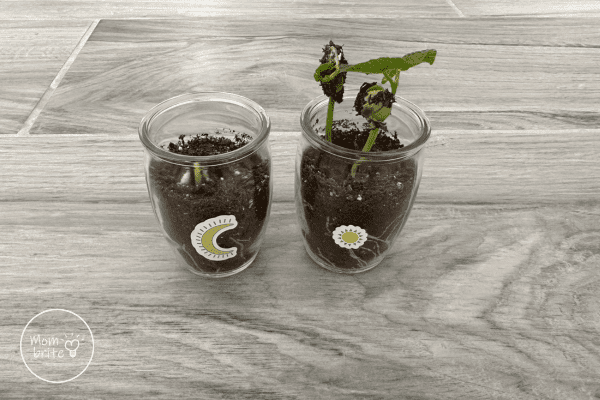
Growing a garden with your kids is an enjoyable and rewarding experience, but it requires careful planning and preparation.
One of the most important steps in successful gardening is understanding the germination requirements of different types of seeds. For example, do seeds need light to germinate?
The answer depends on the type of seed you are planting. Some require light for proper germination, while others need darkness, and others can germinate either way.
In this simple plant science experiment, we will use the scientific method to determine whether or not seeds need light to germinate. We used Henderson Lima Bean seeds for this experiment, but you can certainly use whatever seeds are available to you.

What is Germination?
Germination is the process by which a plant begins to grow from the seed. During germination, the embryo inside the seed or spore starts to develop and grow roots, stems, and leaves. Germination typically begins when a seed or spore is provided with the right conditions, such as warmth, moisture, and oxygen.
During germination, the seed takes up water and swells, then the outer layer of the seed or spore breaks open. The embryo inside the seed or spore then begins to send out a root that anchors itself in the soil or growing medium. A shoot also begins to grow upward, seeking out light and eventually producing leaves to start the process of photosynthesis.
Do Seeds Need Light Experiment
I highly recommend going through the scientific method and perhaps even having your kids fill out these free worksheets for the plant experiment.
Materials:
- Two cups
- Your choice of seeds
- Seed starter soil
Instructions:
1. Scoop the seed starter soil into the two cups. Fill the cups about two-thirds full.
2. Plant 2-3 seeds in the soil. Read the seed packets to determine how much soil should go on top of the seeds.
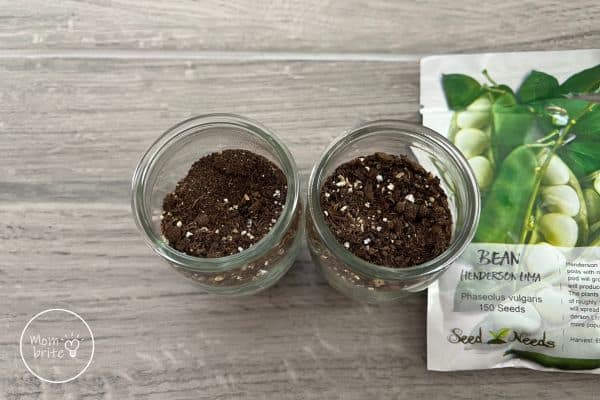
3. Label one cup “light” and one cup “dark.” We had sun and moon stickers so we used those instead to indicate which cup would go under the light.
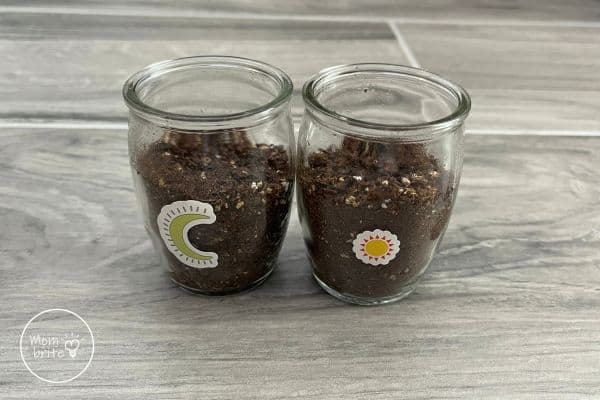
4. Place the “dark” cup in the cabinet or cover it with a box to prevent any light from getting to the seeds.
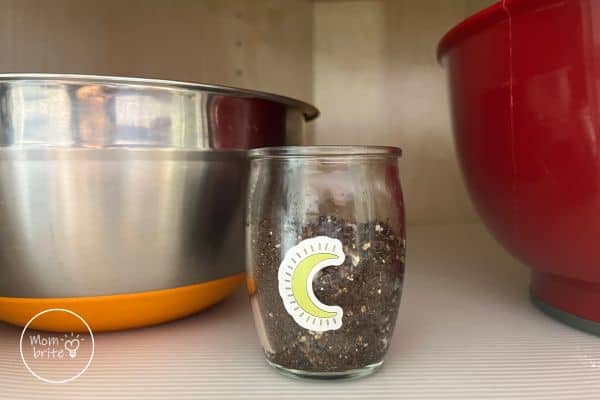
5. Place the “light” cup near a window where the seeds can get some sunlight. We have a hydroponic garden so I placed our cup under the grow light.
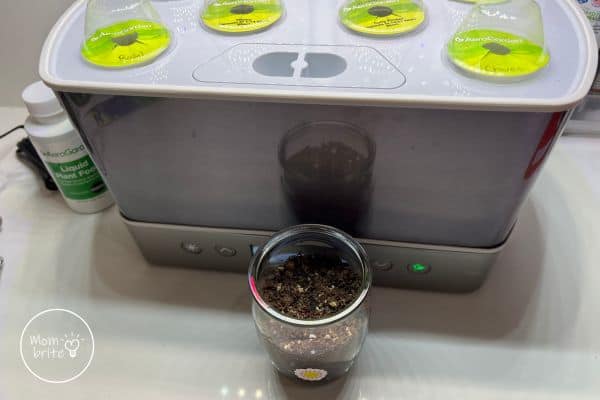
6. Check your seeds every day to ensure that they are getting enough water. Make sure to keep all the conditions the same except the light, including the temperature and amount of water. For example, if you water one cup, then you should water the other cup the same amount. It’s important to keep all the variables the same except the one you are trying to test, which is the light.
7. After one of the seeds has germinated, take the cups out for comparison. Did the seeds in both of the cups germinate? Are the results aligned with your hypothesis?
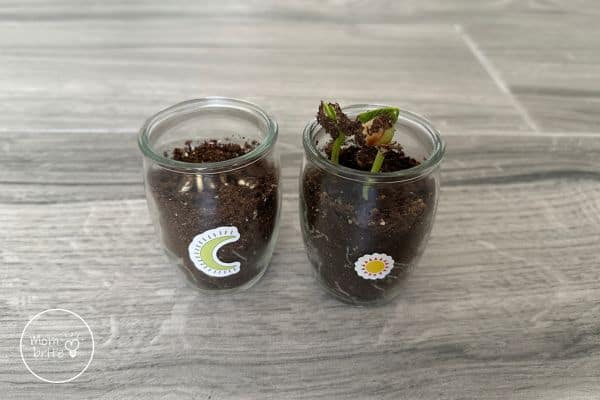
The picture above is a week after we started the seed germination experiment. The seeds from both cups have germinated, as you can see the outer shells of the seeds had broken open and the roots grew down into the soil.
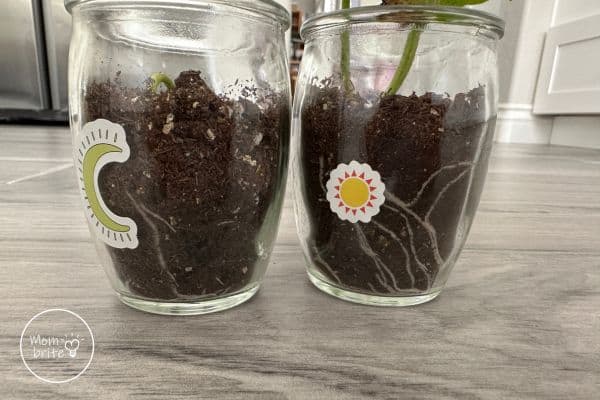
You might be asking, but why then do the two plants look so different? The one placed under the grow light sprouted and already grew a stem. You can even see the leaves starting to come out and unfold. On the other hand, the one placed in the dark barely grew above the soil.
So while the presence of light did not impact germination for Henderson Lima Bean seeds, it did affect the rate at which sprouting happens. The stem grew a lot slower for the seeds left in the dark. To test this theory further, we placed both cups under the grow light. This is the result after just 12 hours under the light!
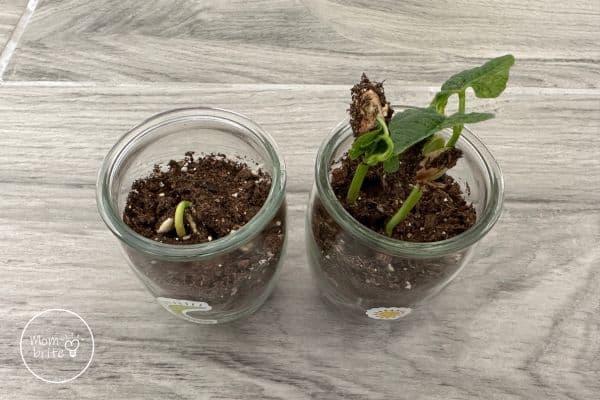
Do Seeds Always Need Light to Germinate?
Germination is the process by which a plant emerges from its seed and begins to grow. There are several factors that influence the germination process, including moisture, temperature, and light. When it comes to light, not all seeds require it to germinate. In fact, some seeds actually require darkness in order to germinate properly.
Seeds that need light to germinate are known as photoblastic. Examples of these seeds include lettuce, petunias, and snapdragons. These seeds require exposure to light in order to trigger the germination process. When these seeds are planted too deeply in the ground, they may struggle to emerge and grow properly.
On the other hand, seeds that need darkness to germinate are known as negatively photoblastic. Examples of these seeds include carrots, onions, and beets. When these seeds are exposed to light, it can actually inhibit their ability to germinate. This is why gardeners often cover these kinds of seeds with soil, mulch, or other light-blocking material.
There are also some seeds that have no preference when it comes to light and can germinate either way. Examples of these seeds include beans, corn, and squash.
In summary, whether or not seeds need light to germinate depends on the type of seed. Some seeds require it, while others require darkness, and still, others can germinate either way. Understanding the germination requirements of different seeds is essential for successful plant growth and a healthy garden.
Click here for a list of seeds that need light to germinate.
YOU MAY LIKE:
